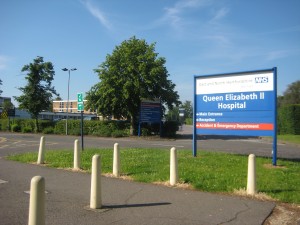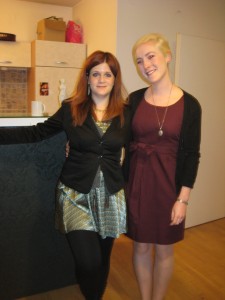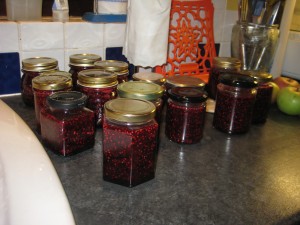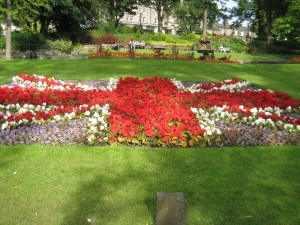In June 2012, jaded from my recent Master’s dissertation submission, I set off to the UK for my much anticipated EUSARNAD attachment. Much like Ben’s experience (EUSARNAD researchers clearly never miss a beat), on arrival I was transported directly to my base at the University of Hertfordshire in Hatfield – six months’ worth of luggage in tow – to attend a Good Clinical Practice seminar. I was unfazed by the day-long seminar, however, and instead delirious with excitement for what lay ahead.
My primary professional base was the Mental Health Unit at the Queen Elizabeth II Hospital in Welwyn Garden City, a short bus ride (and disastrously long bicycle ride, as I would later discover) from Hatfield. Under the mentorship of Prof Naomi Fineberg, we established an ambitious study to examine the clinical and cognitive profiles of patients with comorbid obsessive-compulsive disorder (OCD) and alcohol abuse. Selecting this decidedly understudied clinical group, we knew from the outset that we had our work cut out for us – OCD patients are notoriously avoidant and hence difficult to maintain as research participants. Adding substance addiction to the mix calls for creative and tenacious participant recruitment and retention strategies.
I can say without doubt, however, that the value of the data that we collected on this elusive but clinically important group far outweighs any difficulties that we may have experienced in the process. Thanks to Prof Fineberg’s collaborative links at the University of Cambridge, we were able to include in our study a test that involved administration of small electric shocks – dubbed “irritating snaps”- to the wrists. Dubious as it may sound (and I admit that I was hesitant at first), the snaps were fairly innocuous with participants calibrating the shock intensity themselves. Encouragingly, preliminary data from this task, together with our other assessments, have already revealed some interesting interactions between habit, OCD and addiction, and we look expectedly toward the results of ourongoing work.
In the space of six months, and in between research endeavours, I had the opportunity to travel to Harrogate for the BAP meeting, Vienna for the ICOCS and ECNP meetings (where Lotte and I shared a fabulous rooftop apartment for a week), Winchester for a cultural awakening and jam making experience hosted by David Baldwin and Julia Sinclair, and the Scottish Highlands for a wholly unofficial but wonderfully fulfilling quest to my ancestral roots.
In the time following my attachment, I’ve also presented some EUSARNAD work at IADS and NPSA in Cape Town, as well as at EPA in Nice. In an effort to explore the many historical towns within Hertfordshire during my stay, I tracked down a local cycling advocate group which happened to be lead by members both twice my age and my fitness level. As the honorary member of this group, I found myself on several reasonably short and civilised bicycle rides in the Hatfield-St Albans-Welwyn Garden City region, as well as one unexpected occasion (note: I am a novice and nervous rider at the best of times) where I was unintentionally swept away on a 80km round trip to Aspenden. On the upside, this resulted in a special mention in the group’s riding blog, and you can read about it here: http://www.southhertsctc.org.uk/Cycle/weekend-rides/blog/2012-ride-reports/nov-2012/26novhatfieldtoaspenden.
Predictably, the ten months since my return home to Cape Town could not hope to compare to the hype and travel abundance of my six month EUSARNAD attachment in the United Kingdom; indeed, my attachment set a rather lucrative travel benchmark. I can say, however, that my stay was an enlightening experience on many accounts, and that the personal and professional networks that sprang from my attachment have proved over and again to be mixing pots for new and exciting (ad)ventures.
– Natalie




